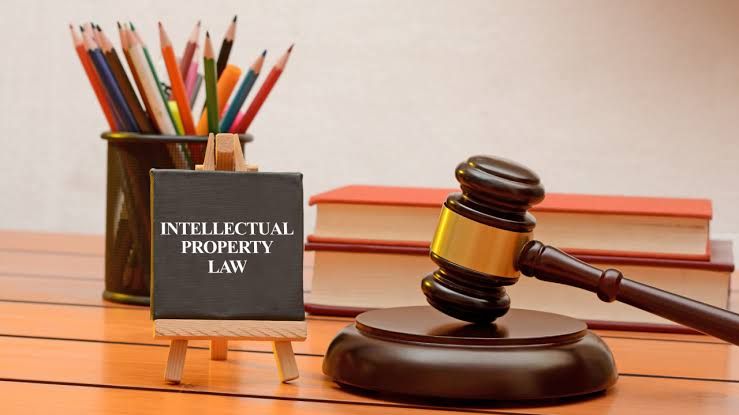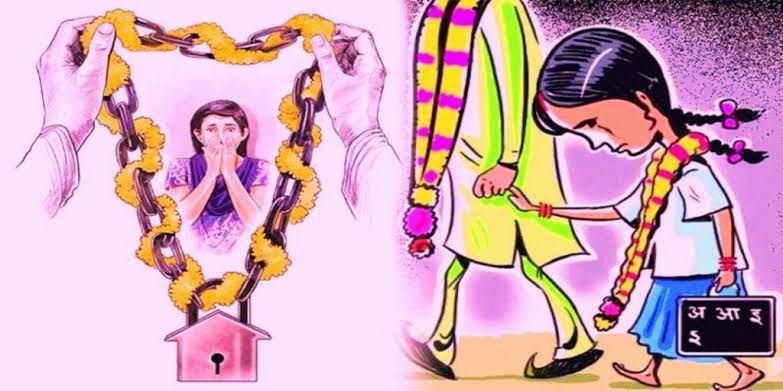Types of Intellectual property 2
Lack of awareness and education 3
Ease of sharing and downloading 3
High costs of legitimate products 3
Author: Gurleen kaur, student at st.soldier law college.
Abstract
The expeditious growth of internet and digitalization or datafication has developed or served as the foundation for the intellectual property laws, the IP encompasses a variety of areas, such as patent for new inventions and innovation, copyrights for the content(music, books, articles, films)and trademarks belonging to businesses. This article explores the complex relationship between the IP law and the piracy on the internet, demonstrating the challenges which become the hurdles for the enforcement of IP law in this digital world. This article will also discuss the causes and effects of internet piracy and how we can combat it through digital rights management. In the final analysis, this article sought to highlight how crucial it is to realize that internet piracy is a crime that destroys many people’s jobs rather than a trend to follow.
key words: intellectual property law, internet piracy, copyright, trademark, patents, digital rights management, innovation, infringement, awareness.
Introduction
– Intellectual property (IP) denotes any intellectual creation, such as literary works, inventions, designs, symbols, names, images, computer code, etc.
This law is made or executed for the protection of creators and their intellectual property and encompasses regions of copyright, trademark law and patents.
-The way society incorporates digitalization into all facets of their lives. IPR identifies as the crucial factor for digital life and when we discuss the issues in the context of online piracy copyright infringement then we end up to the point that IPR is pivotal for the protection of digital space.
Types of Intellectual property
To understand IP in more depth we have to go through its types which are stated below:
Patents
-Patents generally are anticompetitive or monopolistic rights permit by the government of the country to the owner of the invention covering any field, it is a territorial right for a limited period ( 20 years from the date of filling application) , these rights are made for the inventors to sell their inventions.
-These rights are made for the inventors to sell their inventions.
Copyrights
-Copyright is used as a legal term to describe the rights that the creator has for their works or projects in literary, dramatic, musical and artistic works. Also covered the areas of works including books, music, paintings, sculptures and videos or films.
-The copyright is protected for a limited period of 60 years commencing from the year after the author’s passing.
Trademarks
-By the trademark, we understand that it is a sign which is capable of making any difference between the goods or services of one enterprise from those of other enterprises which falls under the category of Brand names, logos and symbols of the company, in layman’s language the identity of any company which makes it distinctive from other companies present as the competition.
-The validity of any trademark is 10 years from the date of application. the trademarks are guardshield by the intellectual property rights.
Piracy on the internet
Definition of Piracy
The general meaning of piracy from the medieval period is the practice of attacking and robbing ships at sea, but the meaning of piracy in IPR is way different and refers to unauthorized duplication of copyrighted content which is then sold at substantially lower prices in the “Grey” market.
Nowadays, piracy has become very rampant and easily accessible .
Let’s take an example that Cd writers are readily available for extremely low prices, music piracy is a straightforward process.
Types of piracy
-Copyright infringement: by this term we understand that copyright infringement occurs when the copyrighted content is copied or reproduced , distribute
d, performed, publicised or made into a derivative content without no consent or permission of the owner of the copyright content.
-Trademark counterfeiting:The use of someone else’s trademark permission or consent stated as trademark counterfeiting . It is a very serious crime of forgery or fraudulent imitation of a trusted brand and product. By the theft of a trademark the reputation of the company got damaged in the global market. It negatively affects the business and imprints a bad image of the company on the consumer’s mind. Trademark Counterfeiting Act,1984 was established to stop this serious forgery and to guardshield the trademark owner’s rights.
-Patent infringement: The fraudulent imitation or theft of any patent work without permission of the patentee(patent owner) is said to be patent infringement. This act may cause great loss to the patentee.
In the statute of patent infringement there are 3 forms, Direct infringement, Indirect infringement, Contributory infringement.
Direct infringement means when someone without the permission or authority, remakes, uses, offers to sell, or sells any patented invention during the term of patent.in the Indirect infringement the infringement is typically observed when a defendant participates in or encourages infringement but does not directly infringe a patent.Contributory infringement occurs when someone uses a secondary method to commit an infringement without directly doing so.
Causes of piracy:
Lack of awareness and education
Many individuals who have no knowledge of intellectual property and its rights believe that online piracy is not a major concern. wrought to inform and enlighten them about its significance for the expansion of the economy and job opportunities.
Weak laws and enforcement
In many cases reusing or remaking pirated content online and forwarding it is frequently not strictly illegal, indicating that laws intended to prevent piracy need to be changed and strengthened in order to effectively curb this practice.
Ease of sharing and downloading
The sharing and downloading content over the internet nowadays is so normal among people because it is easily accessible and becomes one of the causes of piracy on the internet.
High costs of legitimate products
The original content costs much more than the pirated content. This is the main reason for viewers to get it from pirated sources which are totally illegitimate and become the main reason of piracy.
Effects of piracy:
Economic losses
piracy on the internet leads to excess loss in economics by substantial revenue losses in the software, music, and film industries. The calculations showing the estimated economic loss due to piracy are, 12.5 billion dollars loss in music sales (2019), estimated 2.2 billion dollars loss in movie sales(2020), estimated 46.3 billion loss in software industry sales(2020). It demonstrates how internet piracy affects the economy of the industry linked to that specific invention, piece of content, or piece of property in addition to harming the owner of the intellectual property.
Job losses
The industry’s decline in revenue had a knock-on effect on worker’s jobs due to lower profits, as well as negative effects on related industries and their economics. the professions which got sumptuously got agitated by the internet piracy are Creative professionals(artists, musicians, writers, etc, technical professions(software developer, engineers), production and manufacturing staff, sales and marketing teams, distribution and logistic personnel.
Stifling innovation
Stifling innovation happens when a business starts to lose money as a result of content being fraudulently copied online or being pirated. In these cases, the company has very little or no resources left over for research and inventions, which stifles innovation.
Funding organized crime
Organized crime refers to crimes committed in groups with the wrong intent and with the shared goal of spreading violence and negatively throughout the world. These crimes were funded through piracy, which had extremely dangerous consequences.
Combating piracy
Legal measure
Our legal system needs to implement strong legal measures to curb digital piracy and lessen its influence. These measures include:
-our intellectual property laws need to be strengthened and enforced more strictly.
– The owners of intellectual property rights ought to provide additional civil rights like damages and an injunction to deter pirates.
-To toughen the sanctions against piracy and declare it a grave transgression that carries jail time and piracy as punishment.
-Control, prohibition, and stringent regulations should be implemented regarding the import and export of pirated content across borders.
-In order to fight piracy both domestically and internationally, we must work with international organizations.
-We should begin informing people about piracy and its repercussions and launching awareness campaigns to put an end to this issue.
Technological measures:
-In order to protect digital content from unwanted access, a digital right management system is required.
-Moreover, it can be avoided by tracking the ownership of digital content through watermarking or embedding hidden identifiers.
-Fingerprinting is also quite useful since it can identify the true owner based on distinctive traits.
-Strong encryption techniques are able to provide very strong digital content security.
-By keeping an eye out for, tracking, or identifying pirated content, and sending out notices to remove it from websites or other platforms.
-With the use of powerful decentralized ledges to track the true owner, we are able to break the chain of piracy and analyze the patent of piracy with the aid of artificial intelligence(AI) and machine learning(ML).
Educational measures:
-By holding school programs and reaching out to children and youth, we can address the issue of online piracy, which is known to draw in younger audiences due to its lower prices and lack of additional taxes-after all, it is far less expensive than the original content.
-By holding awareness campaigns and teaching the public about how piracy affects both the economy and creators.
-The best method of reaching people and informing them about piracy through institutions like schools and colleges is through public outreach.
-By offering certification programs to the creative and the relevant industries as a way for them to show that they are committed to fighting piracy.
-to encourage people to avoid piracy, we can also work together in partnerships and collaborations with influencers or organizations.
-The use of social media and websites to raise awareness about piracy are two more highly effective online resources. These are all acceptable channels to use to spread anti-piracy awareness among the public.
Conclusion:
After reading up on the topic of online piracy and intellectual property laws, I came to the conclusion that it is critical that we acknowledge the value of original content, the time, effort, and care that go into producing any digital work, as well as the possible harm that piracy can do to their creators and our economy. How crucial is it that we understand the best ways to put an end to this misconduct, what steps to take to prevent this crime, and what precautions and proactive measures the government should take to put an end to piracy as much as possible? I think that since piracy is a serious crime that is undermining our economy and the digital industries, the government ought to toughen up on the penalties and punishments associated with it. It is important for everyone to understand this, and to support the organizations that are trying to stop this wrong of pirate activity.
References:
- https://www.wipo.int/about-ip/en/
- https://www.gov.uk/intellectual-property-an-overview
- https://m.economictimes.com/small-biz/sme-sector/why-need-for-effective-ip-protection-in-digital-space-is-critical/amp_articleshow/106466178.cms
- https://www.ipindia.gov.in/writeraddata/portal/images/pdf/final_FREQUENTLY_ASKED_QUESTIONS_-PATENT.pdf
- https://copyright.gov.in/documents/handbook.html
- https://blog.ipleaders.in/piracy-laws-india/
- https://ecoti.in/VnWThb
- https://www.copyright.gov/help/faq/faq-definitions.html#:~:text=what%20is%20copyright%20infringement%3F,%2Dpeer%20(P2P)%20networking%3F
- https://www.iacc.org/resources/about/what-is-counterfeiting#:~:text=A%20counterfeit%20is%20an%20item,it%20is%20a%20serious%20crime
- https://www.cohnlg.com/trademark-counterfeiting/
- https://sagaciousresearch.com/blog/direct-and-indirect-understanding-the-types-of-patent-infringement/
- https://bytescare.com/blog/what-causes-piracy
- https://bytescare.com/blog/imapct-of-piracy-on-businesses
- https://www.interpol.int/en/crimes/organized-crime
- https://www.imo.org/en/OurWork/Security/Pages/PiracyArmedRobberydefault.aspx
- https://www/brandsnbonds.com/updates/intellectual-property-rights/a-note-on-anti-privacy-laws-in-india/



